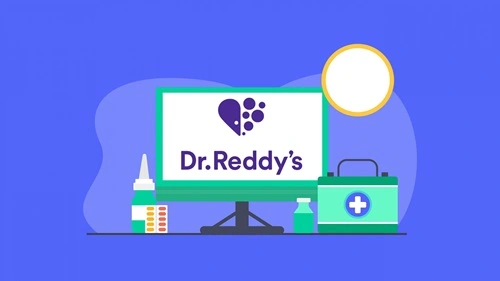Dr. Reddy’s Laboratories is one of India’s largest multinational pharmaceutical companies, known for its strong presence in the generics, biosimilars, and active pharmaceutical ingredients (APIs) markets. Founded in 1984, the company has grown into a global leader, with a robust product portfolio spanning oncology, cardiovascular diseases, gastrointestinal disorders, and more. In this article, we provide a SWOT analysis of Dr. Reddy’s Laboratories for 2024, looking into its strengths, weaknesses, opportunities, and threats.

Dr. Reddy’s Laboratories Current Overview:
Dr. Reddy’s Laboratories is well-positioned globally, with operations in more than 20 countries, and a key focus on generic medicines, biosimilars, and specialty pharmaceuticals. The company has also made significant strides in the biologics and oncology space, with strong research and development (R&D) initiatives driving new product launches. Recent acquisitions, such as the purchase of the US-based generic business Lila Group, have further strengthened its global footprint. Financially, the company reported a healthy revenue growth in 2023, with a robust performance in key markets like the US and Europe.
Strengths:
1. Strong R&D Capabilities: Dr. Reddy’s continues to invest heavily in R&D, with a focus on developing new formulations, biosimilars, and innovative therapies. This helps the company maintain a competitive edge in an industry driven by innovation.
2. Global Presence: With a presence in over 20 countries and a diverse product portfolio, Dr. Reddy’s enjoys a solid international market share, particularly in the US, Europe, and India.
3. Strategic Acquisitions: The company’s acquisition strategy has allowed it to expand its reach in the generics and biosimilars markets. Key acquisitions have provided Dr. Reddy’s with access to proprietary technologies and a broader range of products.
4. Cost-effective Manufacturing: Dr. Reddy’s vertical integration in its manufacturing processes allows it to maintain cost efficiencies, which is critical in the competitive generics market.
Weaknesses:
1. High Dependency on the US Market: Nearly 40% of Dr. Reddy’s revenue comes from the US market, making the company vulnerable to regulatory changes, pricing pressures, and competition in that region.
2. Regulatory and Compliance Issues: The pharmaceutical industry is subject to stringent regulatory norms. Dr. Reddy’s has faced occasional setbacks due to product recalls and compliance issues, which can damage its reputation and cause financial losses.
3. R&D Costs: While R&D is a strength, the high costs associated with drug discovery and development can impact profitability, particularly when outcomes do not lead to successful product launches.
Opportunities:
1. Expansion into Emerging Markets: Dr. Reddy’s is well-positioned to expand its presence in emerging markets such as Africa, Southeast Asia, and Latin America, where demand for affordable healthcare solutions is on the rise.
2. Growth in Biosimilars and Specialty Pharmaceuticals: With the global biosimilars market projected to grow at a CAGR of 28.4% by 2026, Dr. Reddy’s has significant opportunities to expand its product portfolio in this area. The company is also focusing on specialty drugs, particularly in oncology.
3. Digital Health and Telemedicine: The growing digital health market offers an opportunity for Dr. Reddy’s to integrate digital technologies into its offerings, improving patient engagement and operational efficiency.
4. Increased Focus on Sustainability: Dr. Reddy’s has committed to achieving 100% renewable energy usage by 2030, which aligns with the global push for sustainability. This initiative not only enhances its brand reputation but also attracts environmentally-conscious stakeholders.
Threats:
1. Intense Competition: Dr. Reddy’s faces tough competition from both domestic players like Cipla and Lupin, and international pharmaceutical giants such as Teva and Mylan, particularly in the generics market.
2. Regulatory Hurdles: The ever-evolving regulatory landscape can result in delays in product approvals, increasing costs and reducing market opportunities.
3. Price Erosion in Generics: The generic drug market is witnessing price declines, which can erode profit margins. Dr. Reddy’s is vulnerable to this trend, particularly in price-sensitive markets.
4. Dependence on Third-party Suppliers: The company sources a significant portion of its raw materials from external suppliers, which can lead to supply chain disruptions, especially during geopolitical instability.
Future Plans:
Looking ahead, Dr. Reddy’s Laboratories aims to continue its focus on expanding its biosimilars and specialty pharmaceuticals business. The company is also targeting higher growth in emerging markets, particularly in regions with increasing demand for affordable healthcare. In terms of sustainability, Dr. Reddy’s plans to fully transition to renewable energy by 2030, a move that underscores its commitment to environmentally friendly practices. Additionally, strategic investments in digital health initiatives are expected to boost patient care and operational efficiency.
Conclusion:
Dr. Reddy’s Laboratories is a leading player in the global pharmaceutical industry, leveraging its strengths in R&D, manufacturing, and strategic acquisitions to maintain a competitive position. However, the company faces challenges related to its dependency on the US market, regulatory issues, and fierce competition. By capitalizing on opportunities in biosimilars, emerging markets, and digital healthcare, Dr. Reddy’s is well-positioned for continued growth in 2024 and beyond. To succeed, it must focus on innovation, sustainability, and expanding its global footprint while addressing its vulnerabilities in compliance and supply chain management.